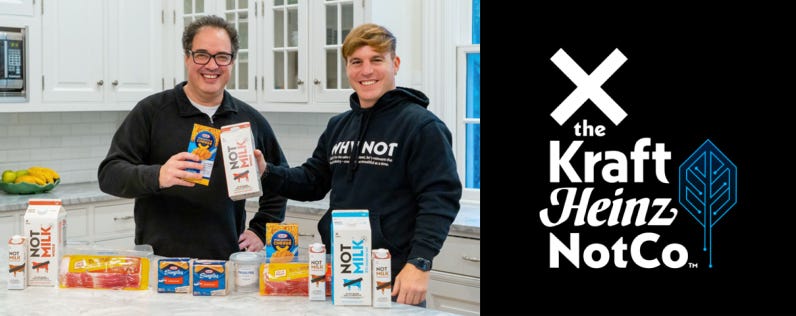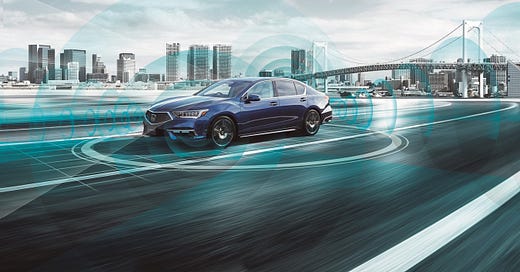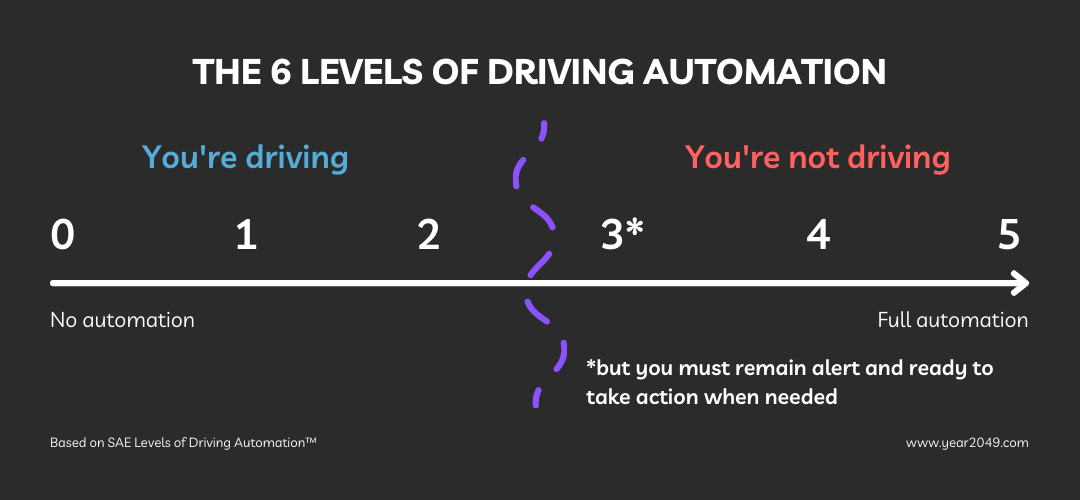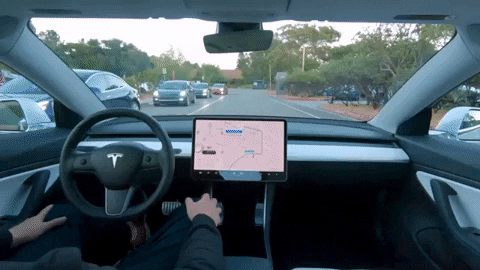Welcome to a new episode of Year 2049, your weekly guide to the innovations, discoveries, and events shaping the future of technology, climate, science, and more.
If this was forwarded to you, you can subscribe for free to get a new story in your inbox every Friday 👇
Hello friends 👋
Automakers are working hard on developing autonomous vehicles. As drivers and passengers, it’s easy for us to get confused by fancy and misleading commercials about what their vehicles can actually do.
For that reason, I put together this quick and handy guide so you can fully understand the 6 levels of driving automation defined by the Society of Automotive Engineers (SAE).
Hope you find this helpful!
– Fawzi
The 6 Levels of Driving Automation
The Dynamic Driving Task
The Society of Automotive Engineers (SAE) defines the level of automation based on whether a human or an automated system is responsible for the Dynamic Driving Task (DDT).
The DDT encapsulates “all of the real-time operational and tactical functions required to operate a vehicle in on-road traffic”.
The 6 levels, at a glance
The levels of driving automation cover the entire range from “no automation at all” (Level 0) to “fully automated” (Level 5).
When are you driving?
Before I explain each level, it’s important to understand that these 6 levels fall into two larger categories:
Levels 0, 1, 2 → You’re driving
Levels 3, 4, 5 → You’re not driving and your vehicle has an Automated Driving System (ADS)
The activities that determine the automation level
The level of driving automation is determined by evaluating whether the human driver or an autonomous system is responsible for each of these 3 activities:
Sustained Lateral and Longitudinal Vehicle Motion Control → fancy words for steering + acceleration/deceleration.
Object and event detection and response → detecting, recognizing, and classifying objects and events + executing an appropriate response to such objects and events.
DDT Fallback → dealing with any system failures or unexpected situations.
Level 0: No Driving Automation
At Level 0, the driver is fully in charge of the entire Dynamic Driving Task.
Level 1: Driver Assistance
At Level 1, the driver is still in charge but may have driver support systems to help with steering or acceleration/deceleration like adaptive cruise control.
Level 2: Partial Driving Automation
At Level 2, the driver controls the vehicle but can activate advanced driver assistance systems (ADAS) that can take over steering and accelerating/decelerating. Even when these systems are active, the driver must be constantly supervising and ready to take the wheel since the vehicle can’t smartly respond to objects or events.
Tesla’s Autopilot technology is a Level 2 system. Although Tesla clarifies that these vehicles aren’t fully autonomous on their site, the use of terms like “Fully Self-Driving” and “Autopilot” can be very misleading.
In other words, please don’t nap while driving a Tesla.
Level 3: Conditional Driving Automation
Although Level 3 falls into the “you’re not driving” camp, there’s an important distinction with Levels 4 and 5.
The driver must still remain alert and ready to take control of the vehicle in case of any system failures or other unexpected situations.
Level 3 systems can detect objects and events, and make decisions based on that.

In 2021, Honda became the first automaker to sell vehicles equipped with a certified Level 3 automation system. The system, called Traffic Jam Pilot, was added to its Honda Legend series.
Here’s what it does:
When activated by the driver, Honda’s 'Traffic Jam Pilot' technology monitors traffic conditions on the highway and takes control of the car from the driver if it determines that it is safe to do so.
It enables the car to follow the vehicle in front and stay in its lane without any input from the driver. The system is required to monitor the highway conditions on a continuous basis and can only be active at speeds up to 50 km/h.
When the system determines that it cannot continue to operate safely, a warning is issued, and the driver must take over control of the vehicle immediately.
– Honda Press Release on November 13, 2020 (Full press release)
Video: A demo of Honda’s L3 system (2 mins)
Level 4: High Driving Automation
Level 4 systems can take over all DDT activities within defined operating conditions such as geographic boundaries, weather conditions, or time-of-day.
An example of Level 4 automation is Waymo.
The company has an active ride-hailing service that only operates in the East Valley of Phoenix, Arizona. You can just to sit it in the backseat and enjoy the ride. If something goes wrong, the vehicle pulls itself over to the side of the road until a human technician arrives.
Video: A ride in a Waymo (7 mins)
Level 5: Full Driving Automation
The vehicle that does it all and more.
Level 5 represents absolute and unconditional automation with no human involvement whatsoever. Unlike Level 4, these vehicles can operate under any condition without any restrictions.
No Level 5 vehicles exist yet.
Something to keep in mind
Marketing jargon around autonomous vehicles can be confusing and misleading, but just remember that you have to remain alert and be ready to take the wheel at any moment for levels 0, 1, 2, and 3.
It’s easy to equate “you’re not driving” with “you don’t need to pay attention”, but now you know the difference.
I hope you found this guide helpful. Take a moment to share this with your family and friends so they can become more aware of the differences between each level.
Thanks for reading Year 2049! If this was forwarded to you, you can subscribe for free to receive a new story in your inbox every Friday.
Company update: NotCo 🤝 Kraft Heinz

Some of you may remember NotCo, the FoodTech startup I covered in Episode 3. Well, something HUGE happened this week.
Kraft Heinz and NotCo announced that they’re creating a joint venture to accelerate and scale sustainable food production around the world.
This is really exciting.
Kraft Heinz is one of the largest food and beverage companies in the world. They have the scale and distribution power to deploy NotCo’s patented technology around the world. This partnership combines the strengths of two companies that want to reimagine how we make food in a way that won’t hurt the planet.
There are many more companies that NotCo can partner up with. Their future is looking bright.
👉 Read my full article about NotCo
How you can support Year 2049
I love writing this newsletter for you all every week. The best way to support me is to invite others to subscribe to the Year 2049 newsletter.
Share Year 2049 by:
or just send this link to someone: https://year2049.substack.com/welcome
If you missed the previous episode
I talked about the space junk problem and the startups trying to clean it up.
or check out all previous Year 2049 episodes.
How would you rate this week's edition?


















